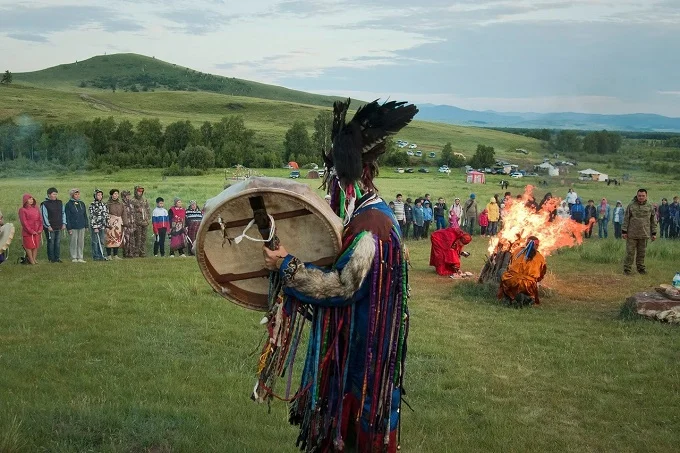Shamanism is an early form of religion based on the belief in communication between a shaman and spirits in a trance state. Shamanism is associated with magic, animism, fetishism, and totemism. Its elements may be contained in various religious systems.
Historically, it has been associated with tribes or populations in certain regions and consists of the belief that shamans have a connection with the beyond, through which they can heal the sick, communicate with spirits, and accompany the souls of the dead to the afterlife.
This ideology focused on belief in supernatural phenomena such as the world of gods, demons, and ancestral spirits. Shamanism was developed among the peoples of the Far East, Southeast and Central Asia, and Africa, among the Indians of North America, Australia, and Oceania, as well as among the Indians of South America.
In one form or another, it existed in most of the peoples of the Earth. In this sense, shamanism is considered to be the most ancient religion, dating back tens of thousands of years.
However, such understanding is a little conditional, as modern religions presuppose a single mythological basis. In shamanism, the mythological basis even within Eurasia can differ rather strongly, and African and American shamanisms, in general, are based on their own systems of myths.
The concept “shaman” is used in many languages. The main version of its origin is from the Evenki word saman, it is also possible that it comes from the Indo-Aryan culture and is derived from the word shramana – listener.
According to archaeological data, shamanistic rituals were practiced in the Far East as early as the Neolithic and Bronze Ages. Unlike most religious teachings created by one founder or another, shamanism developed naturally, historically.
At a certain stage of reflecting the world in the minds of people, the image of the mythical universe became so meaningful and elaborated that only individuals who had special abilities and underwent special training could make sense of it. In most societies, a need for a “mediator” between human and otherworldly worlds appeared.
To get the latest stories, install our app here.
